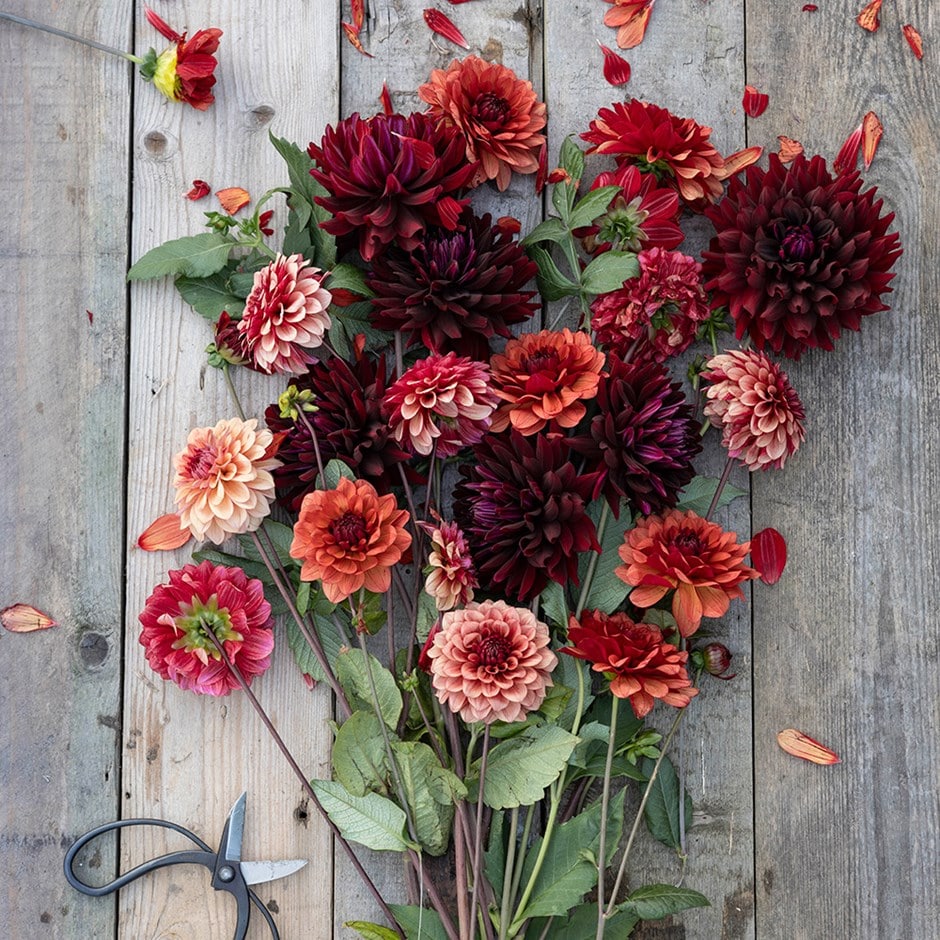Burnt orange dahlia collection
dahlia collection
This bulb dies back after flowering each year and enters a period of rest ahead of regrowth the following season.
- Position: Full sun
- Soil: Fertile, humus-rich soil
- Rate of growth: Average
- Flowering period: July to September
- Hardiness: Half hardy (may need winter protection)
A sumptuous, carefully curated contrasting and complementary dahlia colours and forms to bejewel borders and cut flower vases.
In each collection you will receive one tuber of each of the following:
Dahlia 'Jowey Merel': A resplendent dahlia boasting numerous dusky apricot-pink flowers atop robust and sturdy stems contributing both style and substance to romantic or cut flower border and container displays. Grows to 1m.
Dahlia 'Misses Miley': A vibrant ‘decorative’ dahlia showcasing warm red tones with a plum-purple centre - a delight for interior floral displays and late summer borders alike. This robust perennial boasts an abundance of 10cm (4in) fully double blooms, gracing the garden from midsummer until the first frosts, and notably, 'Misses Miley' extends the beauty of borders and beds well into the season after early perennials have faded, adding depth and brilliance to the garden at this time of year. Grows to 90cm.
Dahlia 'Hollyhill Dark Beauty': Showcasing stunning 15cm (6in) blooms in a captivating black-red hue, making this dahlia an exceptional choice for cutting and adding a striking contrast to floral arrangements or herbaceous borders. The rich and deep tones of its flowerheads not only enrich the colour spectrum but also offer structural interest owing to their neat and uniform shape. Grows to 1.5m.
Dahlia tubers can be planted outside after frost, or started off in pots under glass in late winter to early spring. Plant them horizontally approximately 12cm deep, making sure the ‘eyes’ are uppermost. Allow enough room between each tuber so the plants can grow and spread to their full size without being overcrowded. While in growth, provide a high-nitrogen liquid feed each week in June, then a high-potash fertiliser each week from July to September. Stake with canes or brushwood if it becomes necessary. In mild areas, leave them in situ over winter, but protect the crown with a generous layer of dry mulch. In colder areas, carefully lift and clean the tubers once the first frosts have blackened the foliage and allow them to dry naturally indoors. Then place the dry tubers in a shallow tray, just covered with slightly moist potting compost, sand or vermiculite and store in a frost-free place until planting out again.
- Humans/Pets: Ornamental bulbs - not to be eaten

